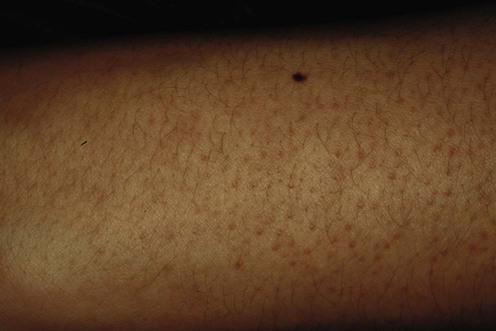 Tetracyclines: oxytetracycline, minocycline Tetracyclines: oxytetracycline, minocycline |
E |
 Long-pulse, non-Q-switched, ruby laser (for keratosis pilaris spinulosa decalvans) Long-pulse, non-Q-switched, ruby laser (for keratosis pilaris spinulosa decalvans) |
E |
 Dapsone (for keratosis folliculitis decalvans) Dapsone (for keratosis folliculitis decalvans) |
E |
 Pulsed tunable dye laser (for keratosis pilaris atrophicans) Pulsed tunable dye laser (for keratosis pilaris atrophicans) |
C |
 Potassium titanyl phosphate laser (for keratosis rubra pilaris) Potassium titanyl phosphate laser (for keratosis rubra pilaris) |
E |


